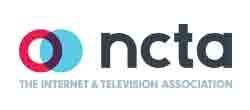The Consumer Technology Association and the NCTA announced a four-year extension of the Voluntary Agreement for Ongoing Improvement to the Energy Efficiency of Set-Top Boxes, initially signed in 2012. The extended agreement is expected to save consumers $1.6 billion in energy costs and avoid 9.3 million metric tons of carbon dioxide (CO2) emissions each year once the agreement's new commitments are fully realized. These savings are the equivalent of avoiding the electricity use of every home in Chicago or the emissions of more than 2 million passenger cars each year, the organizations said.
The extension of the agreement runs through a report in 2022. The signatories also agreed to continue and intensify ongoing technical studies and collaborative efforts to lay a foundation for more rigorous energy efficiency levels in the future.
"The Voluntary Agreement is already moving toward its third generation of improved energy standards and has saved consumers billions of dollars without slowing the rollout of new services such as 4K Ultra High-Definition set-top boxes," said Neal Goldberg, NCTA's general counsel. "The extension of the Voluntary Agreement demonstrates our industry's commitment to approaches that assure our customers benefit from energy efficiency measures while maintaining our ability to develop new services and equipment which they demand."
"CTA believes that voluntary, market-driven initiatives are the most effective means of promoting and achieving significant energy efficiency gains. " said Doug Johnson, vice president of technology policy, CTA. "The set-top box agreement is a successful public-private partnership that accommodates both rapid technological change and significant energy efficiency goals. Across the board, tech devices are becoming more energy efficient, and our industry remains committed to providing consumers with products, services and systems that save money and cut energy use."
The new voluntary agreement will require new reporting on the availability and use of apps that offer consumers an alternative to using set-top boxes for every screen. According to a recent CTA study, The Changing Landscape for Video and Content, consumers watch video content on devices such as laptops, tablets and smartphones (49%) nearly as much as on TV sets (51%). The new viewing trends are expected to help deliver more energy savings.
Agreement signatories include AT&T/DirecTV, Comcast, Charter, DISH, Verizon, Cox, Cablevision, Frontier, CenturyLink, ARRIS, Technicolor and energy efficiency advocates NRDC and ACEEE. CableLabs also plays a role in researching and developing energy efficiency strategies, defining the energy efficiency tiers, and supporting the ongoing implementation of the Voluntary Agreement.
